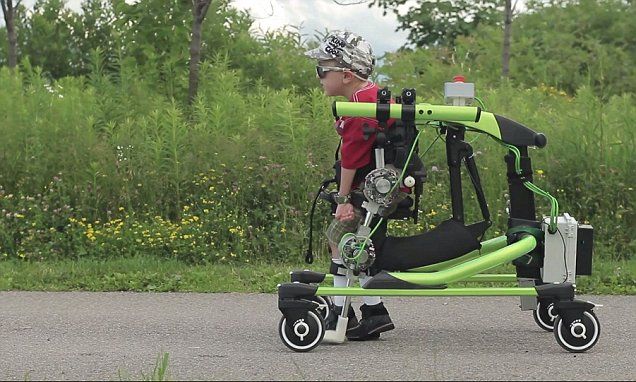Page 10139
Sep 6, 2017
Hackers attacking US and European energy firms could sabotage power grids
Posted by John Gallagher in category: cybercrime/malcode
Now, Symantec reports, the group has resumed operations, apparently working since late 2015 to investigate and penetrate energy facilities in at least three countries: the US, Turkey and Switzerland.
“The Dragonfly group appears to be interested in both learning how energy facilities operate and also gaining access to operational systems themselves, to the extent that the group now potentially has the ability to sabotage or gain control of these systems should it decide to do so,” the cybersecurity firm warns.
Dragonfly’s methods are varied, but all its attacks seem to be focused on researching the inner workings of energy firms. It has been seen sending malicious emails with attachments that leak internal network credentials, which are then used to install backdoors on the network allowing the hackers to take control of computers and systems. They’ve also been seen seeding fake flash updates to install the backdoors and carrying out “watering hole” attacks, hacking third-party websites that were likely to be visited by people working in the energy sector.
Continue reading “Hackers attacking US and European energy firms could sabotage power grids” »
Sep 6, 2017
Sun Unleashes Monster Solar Flare, Strongest in a Decade
Posted by John Gallagher in category: space
Early this morning (Sept. 6), the sun released two powerful solar flares — the second was the most powerful in more than a decade.
At 5:10 a.m. EDT (0910 GMT), an X-class solar flare — the most powerful sun-storm category — blasted from a large sunspot on the sun’s surface. That flare was the strongest since 2015, at X2.2, but it was dwarfed just 3 hours later, at 8:02 a.m. EDT (1202 GMT), by an X9.3 flare, according to the National Oceanic and Atmospheric Administration’s Space Weather Prediction Center (SWPC). The last X9 flare occurred in 2006 (coming in at X9.0).
Sep 6, 2017
Top Silicon Valley tech exec on cash handouts: Let’s eliminate poverty for all Americans
Posted by Carse Peel in categories: economics, employment, ethics
It’s de rigeur for the many of the richest of the rich to tout the benefits of giving cash handouts to all American citizens, in part as a way to end poverty. The idea, called universal basic income (UBI), is for every individual to be paid a regular sum of money regardless of employment status.
One of the tech elite who has an interest in universal basic income is self-made multimillionaire and Y Combinator President Sam Altman. “Eliminating poverty is such a moral imperative and something that I believe in so strongly,” Altman tells CNBC Make It.
“There’s so much research about how bad poverty is. There’s so much research about the emotional and physical toll that it takes on people.
Sep 6, 2017
Startup unveils futuristic exoskeletons to help disabled kids walk
Posted by Carse Peel in categories: cyborgs, robotics/AI

The ‘Iron Man’ exoskeleton that can let disabled children walk again.
- Tréxō Robotics has created and exoskeleton that can help immobile kids walk
- It attached to walkers and is battery-powered to help them propel themselves
- It can help kids with Cerebral Palsy, Paraplegia, stroke, spine and brain injuries
By Sage Lazzaro For Dailymail.com
Continue reading “Startup unveils futuristic exoskeletons to help disabled kids walk” »
Sep 6, 2017
Cellular ‘time machine’ could offer Parkinson’s treatment
Posted by Carse Peel in categories: biotech/medical, life extension, neuroscience

The secret to a long life? A protein that acts as a cellular ‘time machine’ is found to extend the lifespan of fruit flies by 20%.
Biologists have turned back the clock on ageing in the cells of fruit flies, by increasing levels of a protein called Drp1.
Continue reading “Cellular ‘time machine’ could offer Parkinson’s treatment” »
Sep 6, 2017
Robots could soon fly using Iron Man-style jet packs
Posted by Carse Peel in category: robotics/AI

Researchers from the Italian Institute of Technology in Genoa outlined the initial phase of their scheme in a paper published on the online e-print repository Arxiv.org.
A similar design was successfully demonstrated by British inventor Richard Browning back in April.
Continue reading “Robots could soon fly using Iron Man-style jet packs” »
Sep 6, 2017
Car navigation tech brings new twists and turns to driving
Posted by Mark Larkento in categories: mapping, robotics/AI, transportation
How dumb AI came to run the world
“People are becoming trained to just blindly follow their mapping apps. The concern is the apps aren’t making any distinction between what happens when cars travel on highways and when they travel on city streets by schools and through neighborhoods,” says Hans Larsen, public works director in Fremont, California, a San Francisco Bay area suburb on the fringes of Silicon Valley.”
“The traffic being diverted off clogged highways during the morning and evening commutes became so insufferable in Fremont that city leaders decided about a year ago to try to outwit the apps. The city of about 230,000 people started to ban turns at several key intersections at certain times along the shortcuts being touted by Waze and other mapping services.”
Continue reading “Car navigation tech brings new twists and turns to driving” »
Sep 6, 2017
Oxford scientists collaborate with A.I firm on ageing related diseases
Posted by Steve Hill in categories: biotech/medical, life extension, robotics/AI
Oxford scientists are collaborating with artificial Intelligence company Insilico Medicine to prevent unnecessary animal sacrifice and derive more data from experiments in age related research.
The MouseAge.org initiative is being managed by UK charity; Biogerontology Research Foundation and will also include researchers from Harvard and Youth Laboratories in the development of tools for cross-species analysis and novel biomarkers of ageing and various diseases in mice.
Insilico Medicine which provides advanced machine learning services to skin care companies, is using the field of ‘omics’ to introduce a broad range of deep-learned biomarkers of ageing and age-related diseases.
Continue reading “Oxford scientists collaborate with A.I firm on ageing related diseases” »
Sep 6, 2017
Reviewing the Potential of Senolytic Drugs on Aging
Posted by Steve Hill in categories: biotech/medical, life extension
By treating one of the root causes of aging – senescent cells – a new class of drugs, known as senolytics, has the potential to treat a wide range of age-related diseases rather than the traditional approach of dealing with them one at a time. We all age, but the research suggests that we may not have to suffer from age-related ill health.
So what are senescent cells?
As we age, increasing amounts of our cells enter into a state known as senescence. Normally, these cells destroy themselves by a self-destruct process known as apoptosis and are disposed of by the immune system. Unfortunately, as we age, increasing numbers of these cells evade apoptosis and linger in the body.














